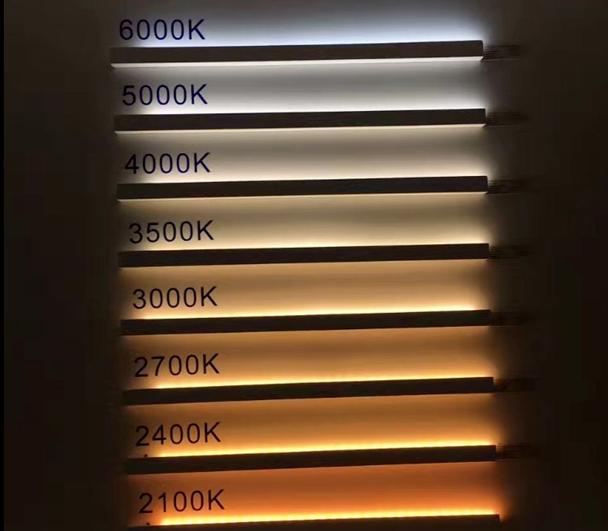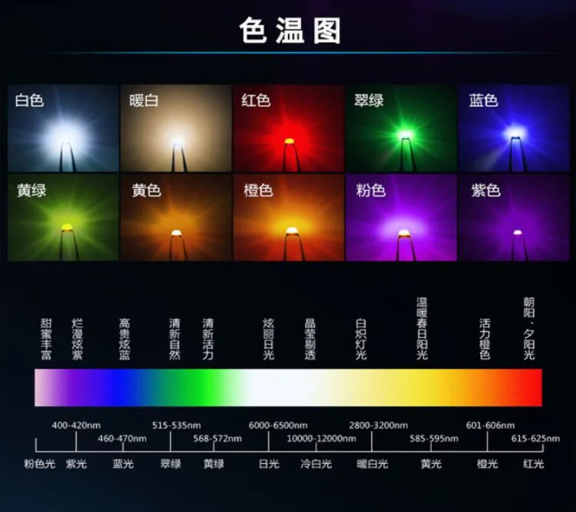What are the color temperatures of LED lights?
2022-03-25

First, the definition of color temperature:
It is expressed by absolute temperature K, that is, the standard black body is heated. When the temperature rises to a certain level, the color of the black body begins to be dark red-light red-orange-yellow-white-blue, and gradually changes. When a light source is the same color as the black body, we put The absolute temperature of the black body is called the color temperature of the light source.
2. Color temperature under different light source environments:
The following is a color temperature comparison table for common LED lighting fixtures:
Halogen 3000k
Tungsten filament lamp 2700k
High Pressure Sodium Lamp 1950-2250k
Candle Light 2000k
Metal Halide Lamp 4000-4600k
Cool Fluorescent 4000-5000k
High pressure mercury lamp 3450-3750k
Warm Fluorescent 2500-3000k
Clear sky 8000-8500k
Cloudy 6500-7500k
Summer Noon Sunshine 5500k
Afternoon Daylight 4000k
3. LED light color at different color temperature:
1. Low color temperature: When the color temperature is below 3300K, the light color is reddish to give a warm feeling; there is a stable atmosphere and a warm feeling; when a low color temperature light source is used, the red color can be more vivid.
2. Medium color temperature: The color temperature is in the middle of 3000--6000K, and people have a refreshing feeling in this tone; so it is called "neutral" color temperature. When irradiated with a medium color temperature light source, the blue color has a cool feeling.
3. High color temperature: The color temperature is over 6000K, and the light color is bluish, giving people a cool feeling. When a high color temperature light source is used, the object will feel cold.

What is the right color temperature for LED lights?
The suitable color temperature range of LED lighting should be close to the color temperature range of the natural white light of the sun, which is the scientific choice; the natural white light with lower illumination intensity can achieve the illumination effect incomparable with other non-natural white light, and the economical road brightness range should be Within 2cd/m2, improving the overall uniformity of lighting and eliminating glare is an effective way to save energy and reduce consumption.
In the era of incandescent lamps and high-pressure sodium lamps, people had no choice but to accept and adapt to the color temperature of lighting fixtures. But in the era of LED lighting that can choose color temperature, what color temperature of LED lighting to choose. This is a major issue involving energy and lighting quality, and we cannot afford to be careless.
In the long process of hundreds of thousands of years from animal evolution to human beings, human beings have always lived under the natural light of the sun and carried out all production and social activities. As a result of a long period of natural selection and evolution, the color temperature range for human eyes to adapt to is the color temperature range of the sun's natural white light (5500-7500K). Within this color temperature range, human eyes have the ability to identify moving and static objects; within this color temperature range, human beings have agile ability to respond to external things. Because most of the image information of objects stored in the memory information bank of people's brain is formed under the illumination of natural white light. Therefore, the suitable color temperature range of LED lighting fixtures should be close to the color temperature range of the natural white light of the sun, which is the scientific choice.




